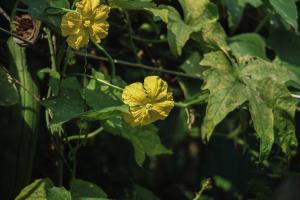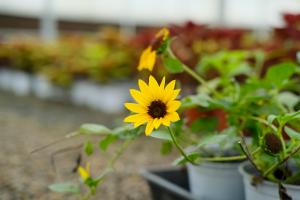What Plants are Water Chestnuts Part of?
Water chestnuts are a type of edible tuber that grows under water. They are a popular ingredient in many Asian dishes and have a crunchy texture and slightly sweet flavor. But what plants are water chestnuts part of? Let's explore.
The Water Chestnut Plant
The water chestnut plant is scientifically known as Eleocharis dulcis and is a type of sedge. It is an aquatic plant that grows in slow-moving or still water bodies like ponds, lakes, and marshes. It is mostly found in Southeast Asia, especially in China, Japan, and Thailand where it is a staple food.
The water chestnut plant grows up to 1.5 meters tall, and its stems are slender and round. Its leaves are thin and grass-like and appear in three ranks. The plant produces small green flowers that are followed by a nut-like fruit that is about 2-3cm in diameter.
Water Chestnuts as Vegetables
Water chestnuts are mostly consumed as a vegetable in many cuisines. They are harvested when the tubers reach maturity and are still submerged in water. The tubers are then collected and sold in markets.
A water chestnut has a brown exterior and a white interior with a crisp texture. It has a slightly sweet taste and is commonly used in stir-fry dishes, soups, and salads. In Chinese cuisine, water chestnuts are often used in vegetarian dishes like Buddha's delight and mock meat.
Health Benefits of Water Chestnuts
Water chestnuts are not just tasty, but they are also packed with nutrients that offer several health benefits. Here are some of them:
Low-calorie: Water chestnuts are low in calories and high in fiber, making them a good choice for people who are trying to lose weight.
Low in fat: Water chestnuts are also low in fat, making them a good alternative to high-fat foods.
High in antioxidants: Water chestnuts are a good source of antioxidants like flavonoids and polyphenols, which can help reduce the risk of chronic diseases like cancer and heart disease.
May improve digestion: Water chestnuts contain soluble fiber, which can improve digestion and prevent constipation.
Good for the heart: Water chestnuts also contain potassium, which is essential for a healthy heart. Potassium can help regulate blood pressure, reduce the risk of stroke, and protect against heart disease.
Conclusion
Water chestnuts are a popular ingredient in many Asian dishes and are known for their crunchy texture and slightly sweet flavor. They are part of the water chestnut plant, which is a type of sedge that grows in slow-moving or still water bodies. Water chestnuts are a good source of nutrients and offer several health benefits like being low in calories, high in fiber, and antioxidants, and good for the heart. So the next time you have water chestnuts in your meal, remember the health benefits they offer.

 how many times do yo...
how many times do yo... how many planted tre...
how many planted tre... how many pine trees ...
how many pine trees ... how many pecan trees...
how many pecan trees... how many plants comp...
how many plants comp... how many plants can ...
how many plants can ... how many plants and ...
how many plants and ... how many pepper plan...
how many pepper plan...






























